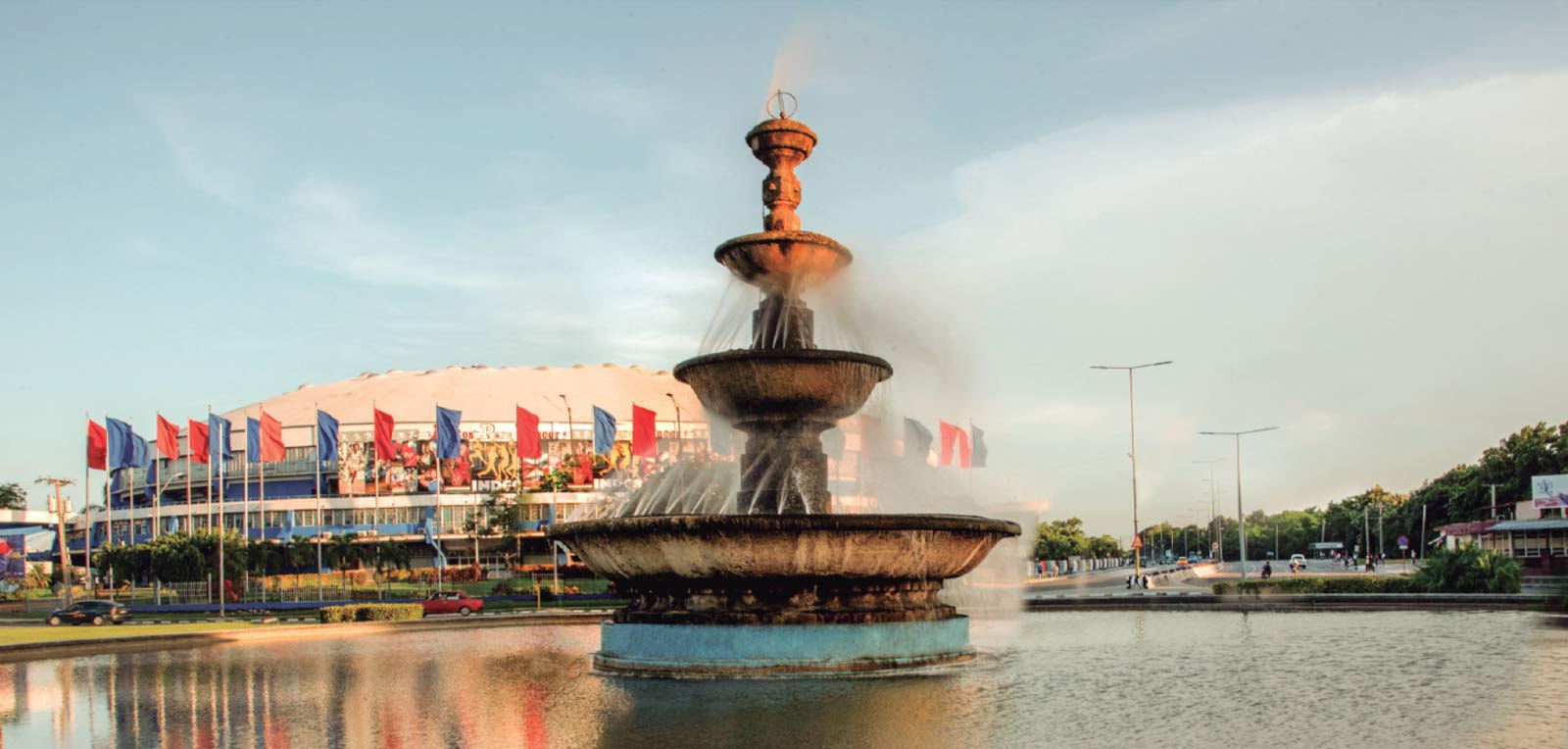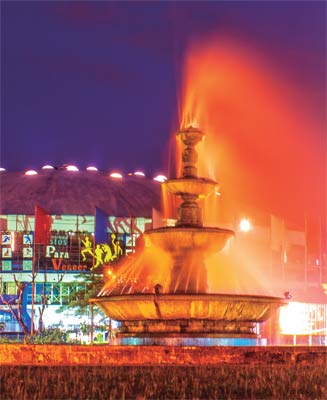
The Light Fountain is located in the Cerro municipality, in the city of Havana, in a traffic circle that connects Rancho Boyeros Avenue with 26th Avenue and Vía Blanca, in front of the Ciudad Deportiva (Sports City).
Opened in 1945, the fountain was created by Cuban architect and engineer José San Martín, the cousin of Ramón Grau San Martín — the President of Cuba from 1944 to 1948. At that time, José San Martín was the secretary of Public Works.

The fountain is one of the main symbols of the Cuban capital, located in an area where the public can enjoy a beautiful landscape and spend the afternoon under the shade of the surrounding trees.
It is made of masonry, with three dish-like plates in the central column, arranged from larger to smaller towards the circular top — reaching over a meter high. The stream of water rebounds on a cylindrical top and then falls on a circular pond. When the fountain was remodeled, a path was built in the center of the traffic circle so that passers-by could cross over to both sides while appreciating the vegetation and stream of water of the fountain.
The Light Fountain doesn’t stand out exclusively for its beauty but the legend passed through the generations of Havana.
In fact, the oldest residents still call it ‘Paulina’s Bidet,’ with a mixture of irony and national humor.
Paulina Alsina was the widow of Grau’s brother, who acted as First Lady because the president was not married. She was one of the main driving forces behind the construction of the monumental fountain.
Hence, the ironic reference of Paulina Alsina’s apparent luxury bathroom.
The fountain has remained in place, enjoyed daily by those in Havana, as it sprays the cars that pass on windy days.